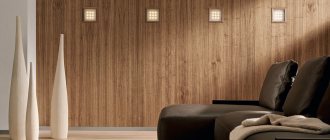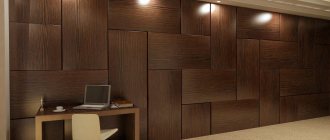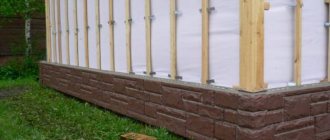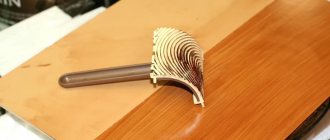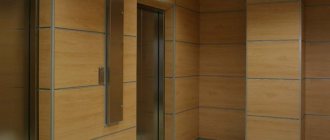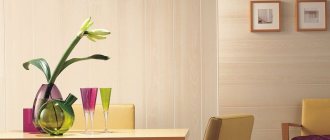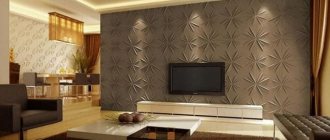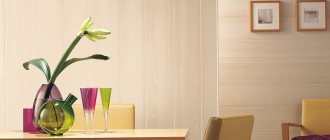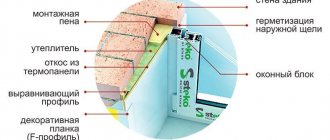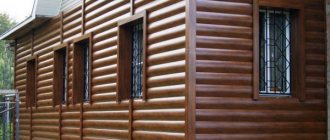Wooden wall panels
Every owner wants to make the design of the room unique when moving into a new apartment or doing a major home renovation. There are many materials on the construction market for wall decoration, from ordinary wallpaper to 3D models. Wooden wall panels are relevant not only because of their safety, but also because of their unique design and unique colors. With such panels the room becomes cozy and warm.
3D panels
Photo found on the Internet
These are original three-dimensional panels that are made from a plywood base and fragments of natural wood. Features of 3D panels:
- production by hot pressing;
- use of high-strength wood;
- varnish or wax protective coating.
The complexity of production and the cost of materials make 3D panels one of the most expensive. The high price is compensated by its spectacular appearance and durability.
Panels for interior wall decoration made of wood: relevance
The panels are intended for finishing walls indoors, for creating a wooden ceiling in offices, living rooms, and children's rooms. Features:
- improve sound insulation, thermal insulation;
- hide small defects of the rough surface;
- do not contain toxic impurities;
- treated with protective agents, so many types are moisture resistant;
- do not fade.
The use of panels has the following advantages;
- In one large room, you can select a wall for a home theater or a corner for indoor plants.
- At the bottom of the wall, panels protect the surface from cats who like to sharpen their claws and other pets.
- In a country house, the ceiling and walls are covered with panels for a greater feeling of warmth, comfort and coziness.
The production of panels is varied in textured patterns, colors, and shapes.
Types of wooden wall panels
There are hundreds of wood panel options on the market. Let's consider the aesthetic characteristics and practicality of the main types.
Decorative slatted
The panels are distinguished by their minimum width and considerable length. They have a variety of mounting methods, vertical, horizontal or diagonal. Made from all types of pressed plates. MDF options are more durable and are great for bathrooms and kitchens. Chipboard and fibreboard - only for dry rooms.
Important: the inclined method of installing slatted panels leads to high material consumption.
The appearance of the panels corresponds to loft and modern motifs. Decorative elements can add zest to a classic interior.
Wood is easy to process, so such panels can be given almost any shape.
Made from natural wood
Wall cladding with solid wood guarantees an indescribable homely atmosphere, peace and comfort. Manufacturers offer wood in the form of slats or squares (tiles). They are convenient to attach and combine with other types of finishes.
Additional information: Staining oak is a labor-intensive procedure during which the trunks are immersed in water and aged for several years. Therefore, bog oak is one of the most expensive materials.
The production of wooden panels involves the use of only environmentally friendly materials.
Designers suggest using solid wood in classic and ethnic interiors. Use for different rooms. Larch will be ideal for the bathroom, and pine is suitable for bedroom walls.
The use of natural wood is limited by price. The most popular option is to decorate the cabinet walls with wood panels.
Pressed panels
Pressed types include MDF, chipboard, fiberboard and OSB. They are created by hot or cold pressing of wood shavings. The cost is much more affordable than natural wood, and the variety of types and textures is richer. They can imitate brickwork, concrete, plaster, wood, etc.
The panels are either solid wood or a variety of lumber that remains after primary processing - shavings, sawdust, pieces of bark.
They have a wide range of applications from children's rooms to hallways. Pressed slabs are suitable for zoning rooms, for the construction of partitions and columns.
3D panels
A new product featuring a three-dimensional relief. Wooden options are made of bamboo or MDF, they are more expensive than gypsum or PVC analogues. They look impressive and original, they can imitate any texture, even a sea wave.
Important! Volumetric sheets attract attention, so you should not experiment with bright colors. It is better to use neutral tones.
The downside is the difficulty of cleaning. Dust accumulates in large recesses.
Wooden panels are the best option for decorating walls both in an apartment and in a country house.
Artificial panels
Artificial types include plastic PVC and plasterboard panels that imitate a wooden surface. Plastic is popular due to its low cost and durability. A significant disadvantage is the possibility of deformation under the influence of heat. In addition, PVC breaks due to impact.
They will harmoniously fit into almost any interior, except perhaps modern high-tech and loft styles.
Plastic panels that imitate wood are most often used in the kitchen and bathroom.
Self-adhesive panels
Boards with an adhesive layer are made from MDF and PVC. They differ in the installation method. Before covering the walls with panels, wooden sheathing is installed. Selected sheets are glued to the frame. The method is convenient for installing lamps.
You can apply any image to self-adhesive panels using offset printing.
The natural nobility inherent in natural wood will emphasize the status of the interior.
What materials are used to make panels?
For the production of facing materials, natural wood and wood-based components are used.
Natural wood panels are made:
- boards of various lengths and widths;
- four coal slabs assembled from lamellas;
- 3D panels having different shapes and textured patterns, assembled from slats and boards.
The material is made from:
- Chipboard – a variety of boards, including those made to look like natural wood. It is in great demand among consumers, although it has many complaints about its qualities.
- Fiberboard - produced in large sheets. May have a coating. However, often it is not there and therefore the decor is made by hand.
- MDF – has a laminated coating or veneer. The textured pattern is no different from natural wood.
- OSB – when using this material, you need to produce decorative finishing yourself.
- Natural wood - to reveal and emphasize the textured pattern, wooden panels are coated with colorless materials that can protect the wood and at the same time emphasize the color and texture.
Each material is unique. It has its advantages and disadvantages.
| Wood | Characteristic |
| Ash | A light type of wood, panels from which are used in dark rooms. Used for wall cladding and as flooring. |
| Walnut | Valuable wood species. Used for panels, parquet, veneer. Walnut has a number of features: it resists moisture and practically does not deform when dried. It is also valued for its colors and textured patterns. |
| Birch | Medium hardness. When cut, there may be differences in colors and shades. Birch is not susceptible to mold. Valued for its textured pattern. |
| Beech | Has a number of positive qualities. The value of the species is in the core - the tree is suitable for processing only in middle age. Wood has different shades. It depends on the place where the tree grew, as well as on the manufacturer who carries out the processing. |
| Oak | Valuable for its many qualities. The difference in color depends on where the tree grew. The color scheme varies from light to dark tones. It has an extraordinary textured pattern. |
| Larch | Pronounced textured pattern, smooth transitions in shades. The longer the wood is exposed to water, the stronger it is and the more expressive the pattern. |
| Cherry | A valuable breed because of its qualities. Colors can range from light, uniform tones to darker ones with light accents. Easy to process, durable. |
| Maple | Valuable breed of light colors. Tree rings have their own tones - the older they are, the darker they are. Easy to process. Many finishing materials are made from it, and it is also used as a basis in construction. |
| Pine | It has a big drawback - releasing a large amount of resin. Therefore, it must be processed carefully. The advantage is durability, color. |
Zoning
Wooden panels are used as the main material for decoration and participate in the zoning of premises. This applies to the panels from which partitions and screens are constructed.
Wooden panels on the walls highlight and emphasize the functional areas of the premises.
In the interior:
Victoria du Monde La Loire 209
Suitable analogues:
Art design 222
Miracle 1003
Mixart 031i
Characteristics of quality wood panels
The popularity of wood surface cladding is due to the characteristics of the material:
- In addition to the natural wood from which the cladding is made, manufacturers offer slabs that are coated with colorless varnish or suitable paint.
- Wood cladding makes the room unusual, conducive to relaxation, and a feeling of security appears.
- Wood is a material without chemical impurities that do not affect human health. Therefore, they are used in children's rooms.
- When mounting the cladding onto the frame, there is no need to level the surface.
- The created frame hides wires and cables.
- Easy to care for wood surfaces.
- Long service life.
- Ease of repair and replacement of parts.
Disadvantages of the material:
- do not tolerate very wet rooms;
- if installation is carried out using the glue method, it is necessary to level the rough surface;
- When fixed to a frame, the room decreases in size.
Despite these disadvantages, the panels are used in apartments, country houses, and private buildings.
Natural wood
Natural wood panels are premium material. Its price is determined by the type of wood and the complexity of its processing. Panels made from rare species or carved wood are especially valued.
Wooden panels are chosen for the following advantages:
- environmental friendliness and breathability;
- good insulating properties;
- natural aesthetics, appropriate in any style.
Most wood panels are only suitable for rooms with normal humidity levels. The exception is panels made of tropical wood or larch.
In the interior:
Victoria du Monde Versailles II 1106
Suitable analogues:
Art design 210
Art Design 283
Victoria du Monde La Loire 204
Wood panels for wall decoration: varieties and classification
There are many finishing materials made of wood on the construction market, which are classified according to the following criteria:
- Form. Slats and plates. The slats are 2.5-3.7 meters long. The width is also different. The slats are assembled using tenons and grooves. Installation is carried out in different ways: horizontally, vertically, diagonally. The slabs are square in shape. Will they line the wall from the floor to the middle? And also used as a separate insert.
- Material. The facing material is made from natural wood, fiberboard, chipboard, MDF.
Cladding has different costs. It depends on the material being made - it will be a valuable type of wood or chipboard.
Decorative slatted
These are long slats, up to 3.7 meters long, up to 30 cm wide, their thickness varies. They are made from wood, PVC, fiberboard and other materials containing wood shavings.
They are used to decorate small rooms where there are many protrusions (corners). If the decoration is light in color, its use visually enlarges and brightens the room or corridor.
Fixing the slats horizontally stretches the room lengthwise; vertically fixes it to visualize a high ceiling. Installation is carried out on the frame base with staples or self-tapping screws.
Made from natural wood
Cladding material made from various types of wood is valued for its unique pattern, shades and play of colors, as well as for its warmth and comfort.
During processing, the wood is handled carefully to preserve its textured pattern and shade. In most cases, the panels are not painted, but coated with colorless varnish for expressiveness and protection from external factors. Wood material can be called capricious - it does not tolerate moisture or sudden temperature changes. Constant exposure to hot air is also unacceptable. Humidity and temperature must be optimal.
The cladding is attached to the created grid of metal profiles or wooden slats.
Pressed panels
Cladding made from pressed wood chips today is non-toxic.
Thanks to new technologies, the composition does not contain phenol glue. Production takes place under great pressure. The pricing policy has not changed. The panels are still affordable to the middle class and perfectly decorate the premises. The facing material is produced in various colors, with patterns or “wood-like”, plain.
Some of them are coated with clear varnish, while others can be painted yourself, adding individuality and achieving the desired result.
There are three ways to mount the material on a rough base: frameless: with glue, screws and a frame.
Artificial wood-look wall panels
The cladding is made of polyvinyl chloride. Painted to match the color of wood. The textured pattern can be exactly like a tree in cross-section. These panels are used for finishing wet rooms, balconies, corridors, living rooms in private houses, loggias and attics. In places where natural wood may swell or crack, PVC will retain its original appearance for a long time.
This material has basically a slatted shape. It is attached to glue and a frame base.
Self-adhesive panels
Self-adhesive panels are made from PVC and MDF.
They are easy to install (without dirt, dust, without reducing the space of the room), and they are also durable. The material has a number of features, including the influence of humidity is unimportant, improved sound insulation, long service life without loss of appearance.
The shape is different: slats, squares. Mounted on the entire wall or partially, chaotically.
The manufactured material is safe for human health.
Lining
Photo found on the Internet
Lining is a group of materials made from natural wood; its elements are equipped with a tongue-and-groove connection for ease of installation. This material is distinguished by profile type. With the help of Shtil, Blockhouse, American lining, certain design problems are solved.
Lining is usually used for finishing balconies and loggias, verandas, baths and saunas. But in recent years it has become increasingly common in residential premises.
Decorating walls with wooden panels in an apartment: masonry options
The finishing material can be fixed to the walls at different angles. It all depends on the chosen design, as well as the priorities of the owner. A decorated room looks individual because there are many options for decorating the interior with wood. The wall will be finished with slats diagonally or vertically, but there will be no repetition, because there are different textured patterns, shades, wood types that have their own shades.
One tree can play with different shades, this depends not only on the processing, but also on the age of the tree.
Herringbone
An interesting way to fix slatted material.
There are 2 types of herringbone installation: fixing the slats at an angle to each other (a herringbone pattern is created on the wall, the branches from below look up, and the length of the “branches” depends on the size of the wall and the room), the second method is to lay the slats one on top of the other horizontally . Slats are used in various widths and lengths. After installation, the herringbone can be painted in a color that matches the interior, or it can be coated with colorless varnish. However, they sell slats on the market that are processed and painted, so they only need to be fixed on a rough base.
Horizontally
If you mount the slats horizontally, the room visually becomes longer. I use 2 methods of fastening: on a frame base or glue. In the first case there is a benefit:
- insulate the wall;
- hide the wires;
- improve sound insulation.
The second method has the following advantages:
- quick installation on a flat surface;
- saving materials;
- saving space.
Each method has its drawbacks, however, when choosing a fixation method, practically no attention is paid to them.
Horizontally fixed slats have different widths - this is of great importance in the overall picture of room arrangement.
Basically, cladding is done up to half the wall from the baseboard, combined with wallpaper, painting and other finishing materials. They create a contrast in the form of “dark-light” or stick to one tone, emphasizing the overall color scheme of the room.
Vertical
The slats are fixed according to the same scheme as in horizontal cladding.
The vertical position increases the height of the ceiling, so installation is carried out from bottom to top. The slats have different widths, colors, and patterns. They are used on balconies and corridors.
If the room is dark, choose light colors. Sometimes one wall is highlighted with decoration, on which there is a niche and illuminated shelves. This makes the room interesting, it is divided into zones: watching TV, a place for necessary significant things.
Abstraction
Abstraction refers to 3D panels created from solid wood or similar to it. These are three-dimensional drawings, paintings with an ambiguous convex relief. The cladding is used to create one wall in the room, which visualizes naturalness.
3D abstraction is created independently from many parts of wood - delicate work. Or they purchase ready-made panels to order - installation is carried out using glue.
Abstraction can also be called chaotically scattered small panels on the wall, combined with other finishing materials or wooden elements, such as shelves, picture frames.
Design ideas
We have considered the main points in the selection options, now we move on to the ideas for designing the interior itself using wooden panels.
- As practice shows, wood looks good not only in its natural environment, but also in the design of premises, and is also a universal material for finishing walls and ceilings.
- In the photo below you can contemplate the design of a house built in 1948 and decorated with wooden panels. This proves that the tree was popular not only in the modern world, but also many years ago.
- The original architecture of the house and the design of the premises were done by the owner Derek Mattins.
- Wooden panels can be used not only in the design of ordinary apartment premises, but also for finishing a pool in a chalet. It looks quite exotic, especially in combination with traditional stone.
- A variant of a modern interior, some of which were built directly into wooden beams.
- In this photo you can see the decoration of the country room using wooden lining, which fits perfectly into the overall interior of the room.
- Different eras and styles have always loved wooden elements for decoration, so our contemporaries picked up this idea and decorated the wall with ebony wood, from which they also made doors.
- The interior of the room is decorated in an eclectic direction, the highlight of which is the compatibility of absolutely inappropriate things. Unusual wooden doors give this room a special touch.
- It is an extremely interesting combination of textured concrete blocks in combination with wood and a creative approach to design and work.
Related article: Living room 9 sq m: how to design the interior?
- In the design of this room we see painted wooden panels used to decorate the walls.
- Decorating your home in a classic wooden style with a large chandelier will help you immerse yourself in the pleasant and soulful atmosphere of yesteryear.
- Wooden panels decorated with gilding will subtly emphasize the luxury and aristocracy of a country house. It will be quite pleasant for you and your guests to stay in the interior of such a house.
- A very unusual approach to wall decoration, because they are made not only using wooden panels, but also have their own inner secret. In fact, under some of the panels there are internal niches where you can put things or other items.
- And the option of such a wall will be conditional, because the screen visually separates one room from another. It is made of pine boards painted white.
- This photo shows a wood finish, namely walnut, which has a favorable warm color and a very beautiful texture. In addition to the walls in the interior, a staircase and a wardrobe were made from a similar material.
- This design option is made using removable wooden panels that can be used to decorate the walls of a private home. This is done so that during the hot period there is an opportunity to “ventilate” the room.
Of course, it is not recommended to decorate the entire house in this style; you can make only one room, or a separate house for guests. This style is often used to build Korean houses.
By the way, this kind of wooden “shutters” are often used in European interiors as panels.
- The decorative corner of the wall is made of wooden material by the famous French designer Olivier Mans.
The idea can be used to create a room in an old style using antique items.
Options for covering walls with wood panels in an apartment
There are 3 ways to attach the cladding to a rough surface.
The most popular is lathing. For this type of fixation, there is practically no need to prepare or level the rough surface. Electrical wires and cables for the Internet and television are hidden behind the panels. They are insulated with mineral wool, which also contributes to better sound insulation.
When installing with glue, the rough surface must be flat, without obvious slopes or defects. In this case, the room should have moderate humidity and no sudden temperature changes (the wall should not be cold and wet).
When using staples, there should be no holes or bumps on the wall, no blown plaster or cracks.
Glue
Before gluing, the wall must be thoroughly inspected for cracks. If there are differences of more than 5 mm, plastering and puttying work must be carried out.
Purchase glue designed for working with wood and follow this plan:
- The wall is cleaned of dust and primed. You need to let the surface dry.
- Dilute the glue according to the instructions.
- The adhesive solution is applied to the wall with a notched trowel.
- The first strip is fixed in the corner.
- The second panel is applied to the first and gently tapped with a hammer. So that the 2 planks are connected. The tenons fit into the grooves.
- Each subsequent element is glued in a similar way until the end of the surface.
We must remember that until the glue has dried, no action can be taken on the surface.
If glue gets on the front side of the cladding, it must be removed immediately with a sponge or rag. After drying, this will be difficult to do, and the appearance may be ruined.
Staples
To fix the wooden cladding onto the brackets, you need to make markings on the rough surface. Using this marking, the staples are secured with self-tapping screws.
The first panel is installed in the corner of the surface and secured with a bracket. The next one is adjusted under the first one and to the end of the wall.
Profile
The cladding is also carried out on a metal profile.
This is the most time-consuming option, but it has advantages. To create the lathing, the surface is treated with an antiseptic.
After this, markings are made and a metal profile is attached to it. Sequence of work:
- Installation of temporary beacons. They are fixed vertically at the corners. A thread is pulled between the beacons and the curvature of the surface is controlled. If the surface has differences (touches the thread), the beacons must be moved a certain distance.
- After determining the location of the sheathing, the metal profile is fixed. Vertical racks are attached to the wall in increments of 30 cm, while the slatted panels will be fixed horizontally.
- If the cladding is carried out vertically, then the profile must be fixed horizontally. The fastening pitch is equal to the width of the strip.
- After the profile is installed, the panels are fixed to it with small self-tapping screws.
The panels begin to be installed from the corner to the end of the wall. After fixing the surface, you can carry out further work: paint, stick a film, wipe off dust.
Types of panels
The cladding is made of various panels, differing in color, design and material from which they are made.
Tree-like MDF panels
If you like wood but cannot use natural boards, you should find a wide selection of wood-like boards in a variety of materials. Wood-like slabs are covered with veneer and finished in another way that imitates the texture and color of natural wood.
Wood paneling, photo
A popular cladding option is MDF board. These are medium-density wood boards that are relatively easy to install and keep clean.
Standard slab sizes, cm:
- thickness – 0.07-0.12;
- width – 12.5-32.5;
- length – 90-260.
The wide range of sizes gives many possibilities for the arrangement of the paneling in the interior.
Finishing panels for walls are finished in various ways, imitating pine, oak, cherry, and exotic wood. The slabs cover:
- opaque paints;
- film;
- laminate;
- natural veneer.
Veneered wall panels
Beautiful, elegant wall coverings blend naturally with modern and traditional interiors. If you need to quickly change the interior, give it strong, distinctive features, you can use veneered wall panels.
The panels, separated from each other by a thin aluminum strip, do not create a homogeneous space and form an orderly interior. Natural veneer combines beautifully with other materials, such as laminated boards.
Veneered panels, photo
The photo above shows wall panels made of 8 mm thick MDF board, covered with natural modified veneer 0.6 mm thick, protected with transparent polyurethane varnish. The connecting element is a decorative aluminum strip. The panels are intended for use in rooms where humidity does not exceed 70%; they should not be exposed to high temperatures, for example, used as a fireplace body.
Veneered cladding on the walls creates a large, dramatic surface without division, characteristic of natural boards. Veneer thickness – 0.6-3 mm. Natural veneer is produced in such a way that it preserves the texture and natural tones of the wood. Veneer is obtained from domestic wood species.
The most popular natural veneers are:
- alders;
- beech;
- birch;
- ash
- pine trees;
- bleached oak;
- species of exotic origin - mahogany, ebony.
Wall cladding finished with natural veneer, photo
Modified veneer has a rich texture, a distinct striped pattern, the result of hundreds of gluing layers of veneer and cutting it into thin strips parallel to the gluing. Modified veneer made from:
- wenge;
- ebony;
- zebrano;
- Finnish birch;
- teak;
- oak
OSB board
In industrial interiors and youth rooms, you can use OSB boards. You need to choose a board of only high quality, which is usually considered as a building material for residential premises. You definitely need to check the quality certificates; not all OSB boards are harmless and suitable for living rooms. The pattern of the OSB board allows you to create a unique interior atmosphere.
Wall cladding with wooden panels: stages of work
Before finishing the surface, it is necessary to carry out a number of preparatory work. They are not complicated and do not require much time, but the quality of the facing surface and its service life depend on them.
Preparing the surface for installation of wooden wall panels
The surface must be free of dust. Primed and free of cracks and chips. Otherwise, the cracks will expand and increase over time, and the chips will begin to crumble.
It is necessary to prime with an antiseptic to avoid the appearance of fungus and midges.
If there are cracks, they are reinforced and puttied. Chips are also repaired with putty.
Panel Layout
After purchase, the facing material is unpacked and each panel is checked for defects.
Next, you need to designate the material for step-by-step fixation. This is especially important when installing with glue. It hardens quickly. In order not to look for which edge to fix upwards, you need to make a layout. That is, lay them out the way they will be on the wall.
Fastening
The material is fastened using glue intended for this purpose.
Liquid nails are also used. They dry quickly, hold together well and have many positive properties. In some cases, polyurethane foam is used. But we must remember that it expands as it dries. This may damage the cladding. When fixing to the sheathing:
- Wooden frame - use small nails.
- Metal – small size self-tapping screws.
Fixation is carried out carefully, without damaging the front side. All screws and nails are hidden in the joints. When placing and inserting one element into another, the fasteners are not visible.
Grouting the seam
There are unfinished panels. After fixing them, finishing is carried out - gluing with self-adhesive tape, painting. They have no grooves or tenons. They are secured with self-tapping screws and nails. After this, the fastening points are covered with putty in the color of the panel, and the seams are covered with strips. They are plastic and have a slight difference in color.
Features of cladding with panel panels for walls
The lower part of the wall is covered with paneled panels. The decorative panel can be painted evenly or highlighted. In any case, the panels look interesting and can be easily combined with other types of finishes.
During the cladding process it is necessary to use a glue gun. Use it to attach the lower and upper plinths to the wall, having previously marked the mounting location using a level.
Then apply glue to the back of the paneling and press it to the wall between the baseboards. The panel should fit perfectly into the slot.
Their installation requires a flat wall surface, so before proceeding with installation, you need to achieve the appropriate surface condition.
How to install on solid wood walls
The walls inside the house can be covered with solid boards.
For this, valuable wood species are used. The processing is carried out in such a way that a parquet board is obtained, a velvety base. Oils, varnishes, and wax are used for this. Almost the entire board is fixed using the tongue-and-groove method. It is also applicable for fixing lining. There are also fasteners sold as a set.
Planken and locking connections are used.
For each type of board, a special type of connection is provided, which firmly fixes the material to the surface.
Can it be attached to the ceiling?
Wooden panels are attached to the ceiling.
For this purpose, rack, typesetting, and sheet forms are used. Sizes may vary. Three-layer sandwich panels are also used. They are made of coniferous trees, the top layer is valuable wood. The layers are glued together with an adhesive or resin. The surface is carved, embossed, and glossed.
Varieties
Cost will always be one of the decisive factors and in this parameter different types of parts will differ very significantly. Naturally, the most expensive and beautiful parts will be those made from real wood. However, not everyone will definitely be able to afford them, and we will consider in more detail the options that replace them:
- Those having a multi-layer structure are the most common, the outer layer of which is the veneer of expensive natural wood. Inside, such elements consist of less valuable species - most often conifers, which reduces the cost.
- Elements glued together from an array. Basically, it is coniferous wood, and the component panels fit together very tightly, creating a monolithic structure.
- Elements glued together from several layers of real wood. Due to the perpendicular placement of each layer, the elements will be very durable and outwardly indistinguishable from solid wood, due to the veneer glued on the top layer.
- The cheapest type is parts made of chipboard, covered with veneer only on top. Despite their cheapness and initially beautiful appearance, they will soon become unusable, since moisture, even in the most ordinary rooms, quickly saturates the chipboard and promotes peeling of the veneer.
Budget, as always, will be a decisive factor - decorating walls with natural wood panels will cost a very decent amount and not everyone can afford it. Chipboard substitutes are simply not a very practical option, although they are cheap. The best choice is medium in price; these are panels glued together from many layers.
Care
The wooden surface is easy to care for.
Simply wipe the surface with a damp microfiber. Then rub with a dry cloth. If the surface is corrugated, use a vacuum cleaner with a soft attachment.
Prophylaxis is performed once every 6 months. To do this, use wood polishes that do not contain aggressive substances: alcohol, ammonia. Use polishes with beeswax.
Wooden panels are varied in shape - slats, squares. They have a varied palette of colors and shades. There are also various methods for attaching panels not only to the wall, but also to the ceiling. Each fastening is made based on many factors.
Methods of protection and care
Wooden panels will decorate your interior for a long time and retain their properties if you provide them with proper care. There are several ways to protect wood:
- Varnish: creates an impenetrable film on the surface of wood and makes its texture more expressive.
- Decorative film: protects wood from moisture, mechanical stress, and fading.
- Wax: An environmentally friendly, water-repellent coating that helps preserve the natural aesthetics of wood.
Also, during operation, the panels must be wiped with a damp cloth. In case of heavy contamination, wash them using a neutral soap solution. The protective coating needs to be renewed periodically.
